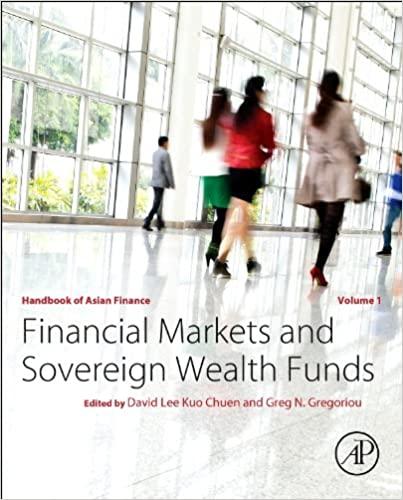Question
John is a financial engineer who has developed an asset pricing model. Like generally accepted pricing models, Johns model predicts a relationship between risk and
John is a financial engineer who has developed an asset pricing model. Like generally accepted pricing models, Johns model predicts a relationship between risk and expected return. However, Johns model uses something called Zen (represented by the variable in Johns writings) as a risk measure. Only John understands how to calculate Zen, but John claims to have proven that, for any stock, ( ) = 3. The following table provides data for five stocks, including actual return, Zen, and beta.
Stock Zen Beta Actual Return
A 0.08 2.00 32.0%
B 0.24 1.75 32.0
C 0.07 1.20 24.0
D 0.04 0.50 12.0
E 0.03 0.25 8.5
a. For each stock, calculate the expected return according to Johns model and the CAPM. The expected return on the market is 20%, and the risk-free rate is 4%.
b. For each stock, use both pricing models to determine whether or not the stock earned an abnormal return. Show whether the abnormal return is positive, negative, or zero.
c. What does this problem reveal about the real-world difficulties of determining whether the market is efficient?
Step by Step Solution
There are 3 Steps involved in it
Step: 1

Get Instant Access to Expert-Tailored Solutions
See step-by-step solutions with expert insights and AI powered tools for academic success
Step: 2

Step: 3

Ace Your Homework with AI
Get the answers you need in no time with our AI-driven, step-by-step assistance
Get Started


